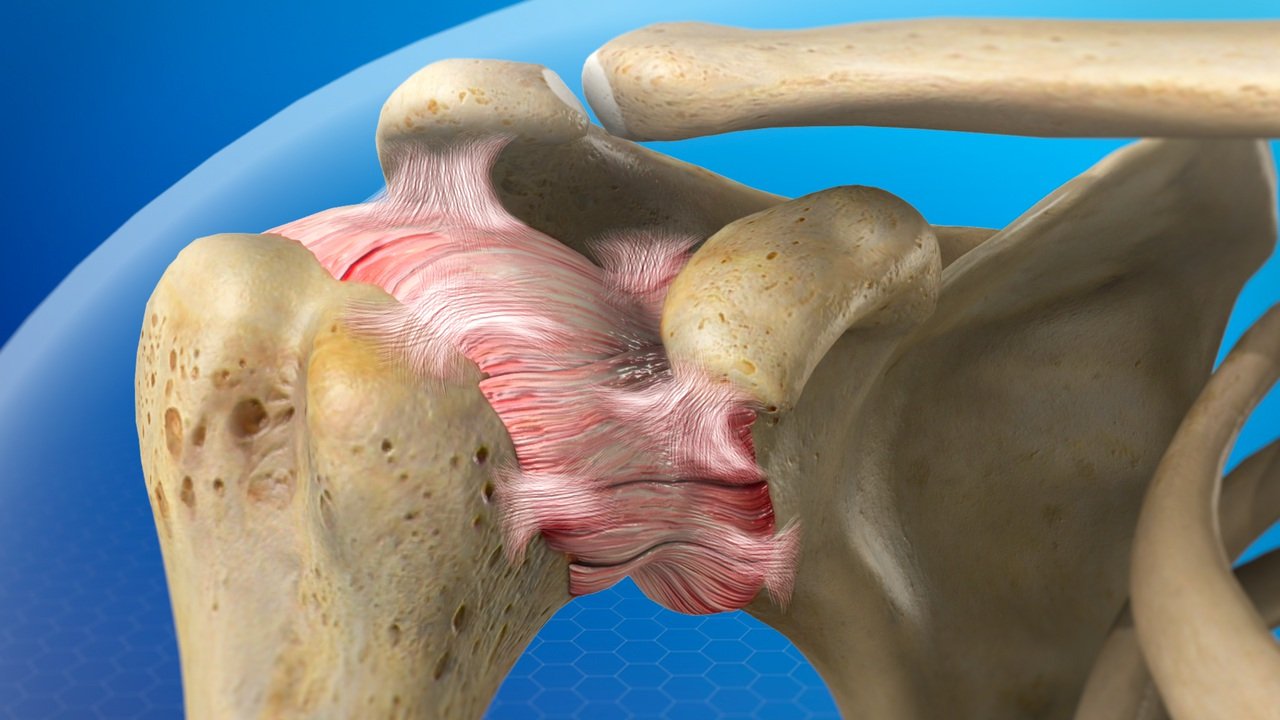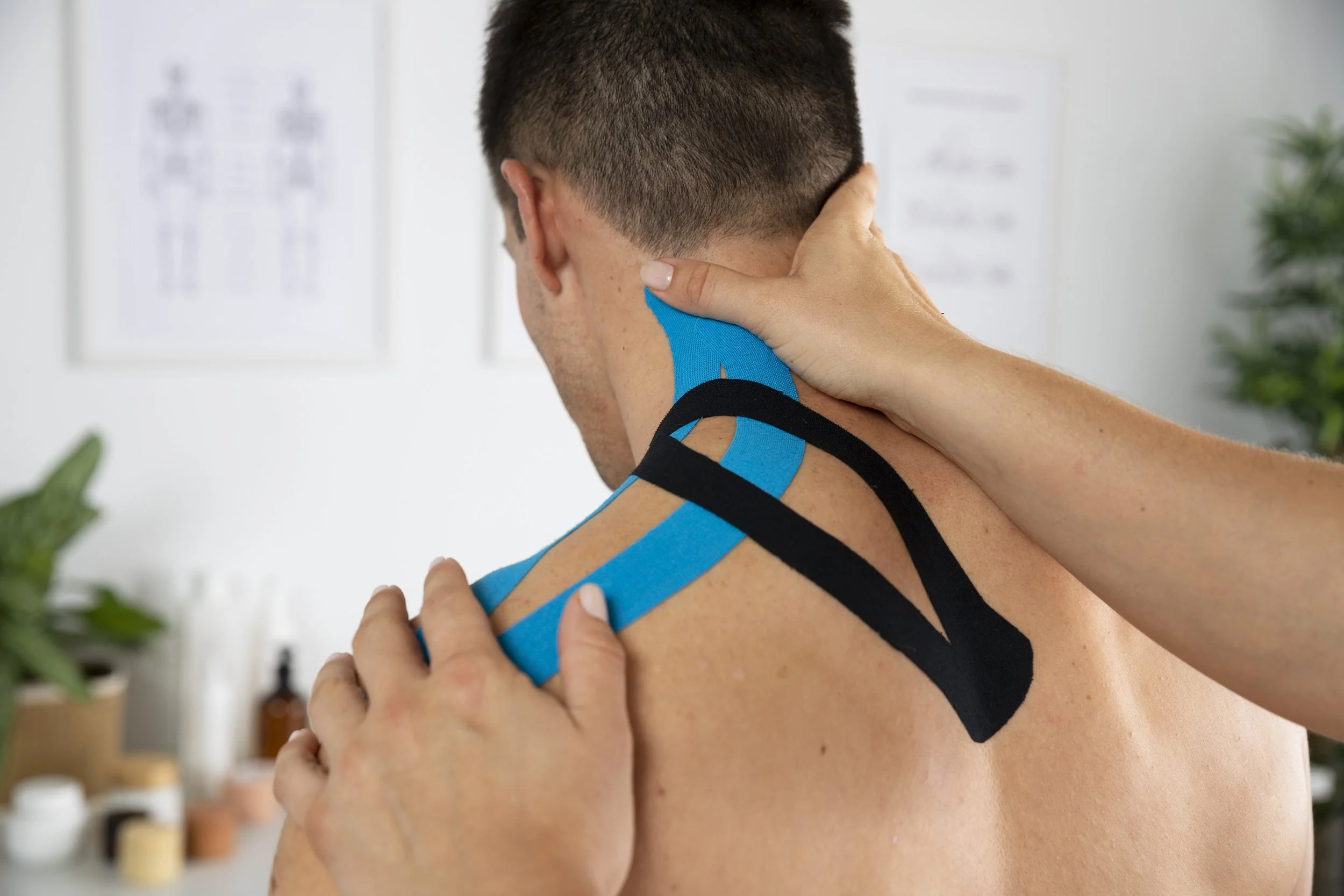Frozen Shoulder: What are the other factors contributing to stiffness in external rotation?
Frozen shoulder, a condition that transforms a simple reach for a coffee cup into a painful challenge, affects millions worldwide. This ailment, also known as adhesive capsulitis, is not just about a stiff shoulder; it's a journey through pain, limited movement, and frustration (1). But what often goes unnoticed are the varied factors that contribute to this condition, especially the stiffness in external rotation. Let's embark on a journey to unravel these hidden contributors, making the complex world of frozen shoulder more understandable and less challenging.
Understanding Frozen Shoulder
Frozen shoulder is marked by a progressive increase in pain and a decrease in range of motion of the shoulder. The pain, particularly intense at the extremes of motion, can be severe enough to disturb sleep and interfere with daily activities. Reaching out or performing overhead activities can become exceedingly painful.
This condition typically develops in three stages.(2) The 'freezing' stage is characterized by a gradual increase in pain and a decrease in range of motion. During the 'frozen' stage, the pain might improve significantly, but the stiffness and limited movement become more pronounced. Finally, in the 'thawing' stage, the range of motion begins to improve.
The exact cause of Frozen Shoulder is not completely understood, but it is believed to involve thickening and tightening of the connective tissue surrounding the shoulder joint. It can develop gradually over time, often taking months or even years to go through its full cycle. While the progression can be slow, the impact on daily life is significant due to the intense pain and restricted movement.
Trauma-Induced Frozen Shoulder
Frozen shoulder can be triggered by various factors, including trauma, but it's important to note that the nature of the trauma can vary significantly. It doesn't necessarily have to be a major injury, such as a posterior dislocation or a proximal humerus fracture; even minor injuries or surgeries can initiate the process. The underlying mechanism involves an inflammatory response that leads to changes at a cellular level. Specifically, fibroblasts, the cells responsible for producing collagen and other fibers, transform into a type called myofibroblasts. These myofibroblasts are more active in contracting and generating the scar tissue, which tightens the joint capsule and restricts shoulder movements. This process is similar in both post-traumatic and idiopathic (spontaneous) cases of frozen shoulder. The resulting limitation in movement, particularly in external rotation, is like trying to turn a knob that's become increasingly difficult to move, not because of rust, but due to the tightening and thickening of the tissues surrounding it.
Medical Conditions as Contributing Factors
Typically, frozen shoulder is associated with age, particularly affecting individuals between 45 and 65 years old. However, on rare occasions, the cause of a frozen shoulder might be linked to underlying medical conditions, although this is not common. For instance, while a sarcoma (a tumour) near the proximal humerus is an extremely rare scenario, it's important to be aware that such serious conditions can indirectly contribute to a frozen shoulder by altering the surrounding tissue environment. This is an unlikely cause, but one that healthcare providers might consider in atypical cases, especially if symptoms arise outside the usual age range for frozen shoulder.
Similarly, Parkinson’s disease, primarily known for its impact on movement and coordination, can in some cases gradually affect the shoulder's flexibility, potentially leading to stiffness and limited range of motion. Again, this is an uncommon occurrence, but it highlights the importance of a comprehensive medical evaluation if you're experiencing shoulder stiffness, particularly if you're outside the typical age bracket for frozen shoulder or have other health conditions.
Arthropathy and Frozen Shoulder
Arthropathy, a term encompassing various joint diseases, can also be a prime suspect in the case of a frozen shoulder. Osteoarthropathy, for example, wears down the joint, similar to how a well-used door hinge might start to creak and resist movement. Avascular necrosis, on the other hand, cuts off blood supply to the bone, leading to a collapse in the joint structure. This is like removing a crucial support beam, causing the entire structure to shift and stiffen.
The Role of Systemic Diseases
Systemic diseases are like uninvited guests that can impact our body in unexpected ways. When it comes to frozen shoulder, certain conditions like diabetes and thyroid disorders play a more significant role than one might realize. Let's break this down.
Diabetes and Its Sticky Complications
Diabetes, a condition known for its high sugar levels, can make the shoulder joint 'sticky' (3). This stickiness is due to a process called glycosylation, where sugars attach to the collagen in the shoulder joint, making it stiff and less flexible. Think of it like a door hinge that's gotten rusty. The shoulder, like that hinge, doesn't move as smoothly as it should. This stiffness can lead to a condition closely resembling frozen shoulder.
Thyroid Disorders: Slowing Down More Than Just Metabolism
Thyroid disorders, especially hypothyroidism, can slow down various bodily functions (4). One lesser-known effect is its impact on joint spaces. Hypothyroidism can lead to the build-up of certain substances like mucopolysaccharides in joints. This build-up is akin to having an excess of thick oil in a machine, which ultimately leads to reduced mobility and stiffness in the shoulder.
Other Contributing Factors
Life isn't always straightforward, and neither is the development of a frozen shoulder. Beyond medical conditions, there are several other players in this game.
Dupuytren’s Disease
Dupuytren’s disease primarily affects the hands, but it shares a surprising connection with frozen shoulder. Both conditions involve an abnormal thickening of the tissue, a bit like an overzealous scar formation. It's like the body's repair system going into overdrive, causing stiffness in the affected areas.
Management
For managing frozen shoulder, it's crucial to follow a phased approach. Initially, a conservative 'wait and see' strategy is often recommended, allowing the shoulder to rest and avoiding any activities that might exacerbate the condition. This stage aims to manage pain and inflammation. Following this, physiotherapy becomes integral. Professional guidance is key here; physiotherapists tailor a regimen to the individual's needs, focusing on exercises that improve shoulder mobility without causing further irritation. It's important to note that aggressive stretching, especially in the early stages, can be detrimental, as it may lead to the transformation of fibroblasts into myofibroblasts, potentially worsening the condition. As the shoulder begins to heal and mobility improves, the exercises can be gradually intensified under expert supervision. If conservative treatments don't yield significant improvement, more direct interventions such as corticosteroid injections may be considered to reduce pain and inflammation. Surgery is typically viewed as a last resort and is usually only recommended when all other treatments have failed to provide relief and the condition severely impacts the patient's quality of life.
Dealing with a frozen shoulder is undoubtedly challenging, but it's a journey that leads to recovery and better understanding of one's body. Recognizing the role of systemic diseases and other contributing factors is crucial in this journey. Physiotherapy stands out as a beacon of hope, guiding patients through the dark tunnel of pain and stiffness into the light of improved mobility and comfort.
It's clear that this condition is more than just a physical ailment; it's a complex interplay of various factors. Understanding these nuances is the key to effective management and recovery. So, whether you're a patient dealing with this condition or a healthcare professional helping others, remember that knowledge is power and the first step towards healing.
References:
Mezian K, Coffey R, Chang KV. Frozen Shoulder. [Updated 2023 Aug 28]. In: StatPearls [Internet]. Treasure Island (FL): StatPearls Publishing; 2024 Jan-. Available from: https://www.ncbi.nlm.nih.gov/books/NBK482162/
Rangan A, Goodchild L, Gibson J, Brownson P, Thomas M, Rees J, Kulkarni R. Frozen Shoulder. Shoulder Elbow. 2015 Oct;7(4):299-307. doi: 10.1177/1758573215601779. Epub 2015 Sep 23. Erratum in: Shoulder Elbow. 2016 Jul;8(3):215. PMID: 27582992; PMCID: PMC4935124.
Zreik NH, Malik RA, Charalambous CP. Adhesive capsulitis of the shoulder and diabetes: a meta-analysis of prevalence. Muscles Ligaments Tendons J. 2016 May 19;6(1):26-34. doi: 10.11138/mltj/2016.6.1.026. PMID: 27331029; PMCID: PMC4915459.
Deng, Guanghua MDa; Wei, Yongkang MDb,*. The causal relationship between hypothyroidism and frozen shoulder: A two-sample Mendelian randomization. Medicine 102(43):p e35650, October 27, 2023. | DOI: 10.1097/MD.0000000000035650




